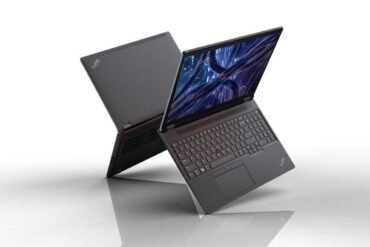Motherboard Chipset Fan: Cooling Modern Chipsets
Table of Contents
The Importance of Chipset Cooling
When it comes to modern chipsets, cooling is an essential aspect that should not be overlooked. Chipsets are responsible for coordinating the communication between various components on a motherboard, including the CPU, RAM, and other peripherals. They play a crucial role in the overall performance and stability of a computer.
Here are a few reasons why chipset cooling is of utmost importance:
- Heat Dissipation: Chipsets generate heat during their operation, especially when handling intensive tasks or running at high speeds. Without proper cooling, this heat can accumulate and lead to performance issues, instability, and even permanent damage to the chipset.
- Enhanced Stability: Excessive heat can cause a chipset to become unstable, leading to system crashes, freezes, or unexpected reboots. By keeping the chipset cool, you can ensure the smooth operation of your computer, especially during resource-intensive tasks like gaming or video editing.
- Extended Lifespan: Overheating can significantly reduce the lifespan of a chipset. By implementing effective cooling solutions, you can prevent premature wear and tear, ultimately extending the longevity of your motherboard and saving you from costly repairs or replacements.
- Improved Performance: Cooling a chipset helps maintain optimal operating temperatures, which in turn allows the chipset to perform at its best. By preventing thermal throttling, you can maximize the performance potential of your computer, resulting in faster processing speeds and smoother multitasking.
- Noise Reduction: Some chipsets come with built-in fans that can produce noticeable noise when running at high speeds. By investing in efficient cooling solutions, such as aftermarket chipset fans or heatsinks, you can reduce the noise levels in your system and enjoy a quieter computing experience.
In conclusion, chipset cooling is vital for maintaining the performance, stability, and longevity of your computer. By investing in effective cooling solutions, you can prevent overheating issues, enhance system stability, and optimize the overall performance of your motherboard’s chipset.
Types of Motherboard Chipset Fans
When it comes to cooling modern chipsets, motherboard chipset fans play a crucial role in maintaining optimal temperature levels. These fans come in various types, each with its own unique features and benefits. In this section, we will explore the different types of motherboard chipset fans available in the market:
- Passive Chipset Heatsinks: Some motherboards come with passive heatsinks for chipset cooling. These heatsinks are made of metal and rely on natural airflow within the computer case to dissipate heat. While they are silent and require no additional power, their cooling efficiency might not be sufficient for high-performance systems.
- Active Chipset Heatsinks: Active heatsinks are similar to passive heatsinks but include a small fan attached to enhance the cooling process. These fans are usually small and operate at low speeds, generating minimal noise. Active chipset heatsinks provide better cooling performance compared to passive heatsinks.
- Chipset Fans: Dedicated chipset fans are small fans designed specifically for cooling the chipset on the motherboard. These fans are compact and efficiently dissipate heat from the chipset. They are often attached to the chipset using clips or screws and can be easily replaced or upgraded if needed.
- Chipset Water Blocks: Water cooling is another popular option for high-performance systems. Chipset water blocks are specialized components that connect to a liquid cooling system. They transfer heat away from the chipset using a liquid coolant, offering excellent cooling performance. However, water cooling requires additional setup and maintenance.
When choosing a motherboard chipset fan, consider factors like the size and layout of your motherboard, the power requirements of the fan, and the overall cooling needs of your system. It’s important to ensure compatibility with your motherboard and check for any installation limitations or restrictions.
Understanding the different types of motherboard chipset fans allows you to make an informed decision when it comes to cooling your modern chipsets. Whether you opt for a passive heatsink, an active heatsink, a dedicated chipset fan, or a chipset water block, proper cooling will help ensure the stability and longevity of your system.
Choosing the Right Fan
When it comes to cooling modern chipsets, choosing the right fan is crucial. Here are some factors to consider when selecting a motherboard chipset fan:
- Compatibility: Ensure that the fan you choose is compatible with your motherboard chipset. Check the manufacturer’s specifications or consult the documentation to find out which fan models are recommended.
- Size and form factor: Consider the size and form factor of the fan. It should fit comfortably on your motherboard without obstructing any other components or interfering with the airflow in the system. Measure the available space on your motherboard to determine the appropriate size.
- Noise level: Pay attention to the noise level of the fan. Some fans can be quite noisy, which can be distracting and irritating. Look for fans that have a noise level rating that suits your preference. Fans with lower RPM (rotations per minute) tend to generate less noise.
- Airflow and cooling efficiency: Assess the airflow and cooling efficiency of the fan. Look for fans that have a high CFM (cubic feet per minute) rating, as this indicates better airflow. Additionally, consider fans with heat sink designs or additional cooling features to ensure efficient heat dissipation.
- Durability and lifespan: Consider the durability and lifespan of the fan. Look for fans made with high-quality materials and those that are backed by a warranty. Fans with ball bearings or fluid dynamic bearings tend to be more durable and have a longer lifespan.
- Price: Take into account your budget when selecting a motherboard chipset fan. There are various fan options available at different price points. While it is important to invest in a reliable and efficient fan, ensure that it fits within your budget.
By considering these factors, you can choose the right fan for your motherboard chipset, ensuring efficient cooling and optimal performance of your system.
Installation and Maintenance Tips
Proper installation and regular maintenance are essential for ensuring the optimal performance and longevity of your motherboard chipset fan. Here are some key tips to follow:
- Read the manufacturer’s instructions: Before installation, carefully read the user manual or instructions provided by the manufacturer. Each chipset fan may have specific requirements and installation steps, so it’s important to follow them correctly.
- Choose a suitable location: Select a proper location on your motherboard for installing the chipset fan. Look for a spot near the chipset that allows for efficient airflow and does not obstruct other components.
- Ensure proper connectivity: Connect the chipset fan to the appropriate fan header on your motherboard. Make sure the connection is secure and the fan is receiving power.
- Apply thermal paste: Before attaching the chipset fan, apply a thin layer of thermal paste on the chipset. This helps improve heat transfer between the chipset and the fan, leading to better cooling performance.
- Secure the fan: Attach the chipset fan firmly to the designated spot on the motherboard. Use the provided screws or clips to ensure it is securely fastened in place.
- Regularly clean and dust: Dust accumulation can hinder the airflow and reduce the cooling efficiency of your chipset fan. Regularly clean the fan blades and surrounding areas using compressed air or a soft brush to remove any dust or debris.
- Monitor fan speed and temperatures: Use monitoring software or the BIOS to keep an eye on the fan speed and chipset temperatures. If you notice any significant changes or abnormalities, investigate and take appropriate action.
- Replace if necessary: Over time, the chipset fan may wear out or become less effective. If you experience cooling issues or notice excessive noise, consider replacing the fan with a compatible and reliable alternative.
By following these installation and maintenance tips, you can ensure that your motherboard chipset fan operates at its best, keeping your modern chipsets cool and protected.
Advancements in Chipset Cooling Technology
In recent years, the demand for higher performance and increased power efficiency in computer systems has driven the need for more advanced cooling solutions. This is especially true when it comes to the cooling of motherboard chipsets, which play a crucial role in the overall performance and stability of a computer system.
Traditionally, chipset cooling was achieved through the use of small, noisy fans that were mounted directly on the chipset. However, these fans were often prone to failure, resulting in overheating and system instability. Additionally, they added extra noise and maintenance requirements to the system.
Fortunately, advancements in chipset cooling technology have led to more efficient and reliable cooling solutions. One of the most notable advancements is the introduction of passive cooling systems, which rely on heat sinks and heat pipes to dissipate heat without the use of fans. These passive cooling solutions offer several benefits:
- Improved reliability: With no moving parts, passive cooling systems are less prone to failure, increasing the overall reliability of the system.
- Noise reduction: By eliminating the need for fans, passive cooling systems significantly reduce the noise generated by the computer system.
- Reduced maintenance: Without fans, there are no fan blades to accumulate dust and debris, reducing the need for regular cleaning and maintenance.
- Enhanced aesthetics: Passive cooling systems often feature sleek and visually appealing designs, adding to the overall aesthetics of the computer system.
Another significant advancement in chipset cooling technology is the integration of liquid cooling systems. Liquid cooling utilizes a closed-loop system that circulates a coolant through a series of tubes and heat sinks, effectively transferring heat away from the chipset. This method allows for even greater cooling efficiency and can handle higher thermal loads compared to passive cooling solutions.
Furthermore, modern motherboard manufacturers are implementing intelligent cooling technologies, such as temperature sensors and fan speed control, to optimize the cooling performance based on real-time conditions. This ensures that the chipset remains within safe temperature limits, even during intensive tasks or overclocking.
In conclusion, advancements in chipset cooling technology have revolutionized the way modern chipsets are cooled. Passive cooling systems, liquid cooling solutions, and intelligent cooling technologies have all contributed to improved reliability, reduced noise, enhanced aesthetics, and better overall performance of computer systems. As technology continues to evolve, we can expect further innovations in chipset cooling, providing even more efficient and effective cooling solutions for future generations of computer systems.



























